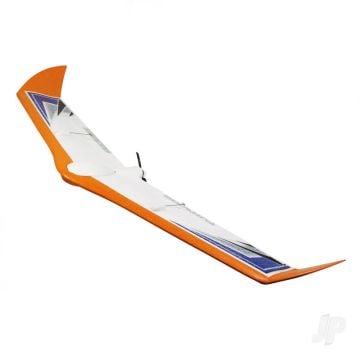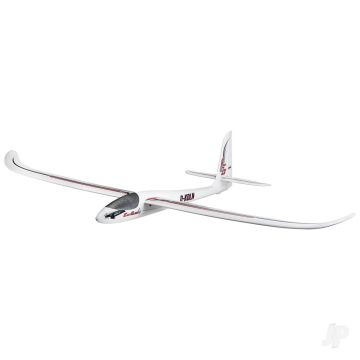What Are RC Gliders?
Inspired by the life-sized fixed-wing aircraft types that rely on the air pushing against its flat surfaces to stay in flight, radio controlled glider vehicles are based around the same mechanics.
Given their lightweight, wind-susceptible build, RC gliders are favourites among RC competition enthusiasts. They lend themselves exceptionally well to all sorts of acrobatics, so it should come as no surprise that remote control glider tournaments attract large crowds on a regular basis.
RC Gliders vs. RC Planes
As we already mentioned, glider planes have no propulsion system in place, so they’re impossible to launch from a still position. This is also one of the main reasons why RC gliders are not recommended for complete beginners – they’re a fair bit harder to control. The fact that these vehicles are much lighter and less sturdy than theirfuel-based counterparts is also a major barrier to entry – a poor launch or landing can wreck the model entirely.
But we don’t mean to discourage RC newbies from trying out gliders. They’re actually some of the most satisfying types of aircraft to master. Once you get a grasp of how to launch and land them safely, you can move on to learning tricks that are simply impossible to carry out using conventional RC planes.
How to Launch an RC Glider?
The engine-free nature of RC gliders make them a bit intimidating to RC newcomers. However, once the plane is launched into the air, gliders are very similar to regular RC planes in that they also rely on an RC controller to move them in the intended direction. If you’re a complete RC beginner, we’d recommend you to start learning the right launch and landing techniques with someone who’s already got some experience with RC gliders.
Here are some of the most common launching methods you might want to familiarise yourself before you head out with your brand new radio control glider:
- Hand launch:The simplest way to get your glider airborne. Hold your RC glider at an angle between 45 and 90 degrees in relation to the ground, and throw it into the wind. For the best results, you might want to stand atop a small hill to increase the distance between the plane and the ground.
- Hi-start/Bungee launch:Using an elastic cord attached to a stick or spike that’s set firmly in the ground, pull the plane back and release, launching it upwards into the air.
- Towline launch:This launch method requires another person to help you get the plane into the air. The pilot controls the plane, while the “assistant” runs along the ground holding a long (50-150m) line with the RC glider attached to one end. Once sufficient speed has been achieved, the aircraft can be released.
- Piggyback launch:You’ll need a second RC plane and an experienced pilot for this one, but if you want to achieve the “wow” effect with your RC glider launch, the piggyback method is the way to go. It relies on a second, engine-powered RC plane with a cradle to which the glider is attached. Once enough speed and altitude has been reached, the glider can be safely detached from the second plane.
What to Look For in a New Remote Control Glider?
RC gliders may be more of a niche choice among RC enthusiasts, but there are still dozens of models out there to choose from. If you’re shopping around for a glider to call your own, there are a number of things you’ll have to be on the lookout for. Here’s a rundown of the basics:
- Aerodynamics:Consider the shape and span of the aircraft’s wings and body. Most RC gliders look similar, but differ in the length and thickness of the wings. If you’re a beginner, we’d recommend you look for a glider with loads of wingspace, as they tend to be much easier to launch and land.
- Material:While most gliders are plastic, there are also rubber, foam and aluminium models, to name a few. Most starter gliders are usually created using a combination of foam/rubber and plastic, to minimise damage upon impact.
- Smart features:Many of the higher end RC glider models like theEflite Night Radian come with additional features, such as smart telemetry, allowing you to gain better insight into the speed, altitude, and other metrics of your plane once it’s in the air.
- Recommended experience level:Carefully read over the product descriptions of RC gliders you want to buy. The suggested experience level should be noted in those, allowing you to find a model that’s best-suited for your skills.




